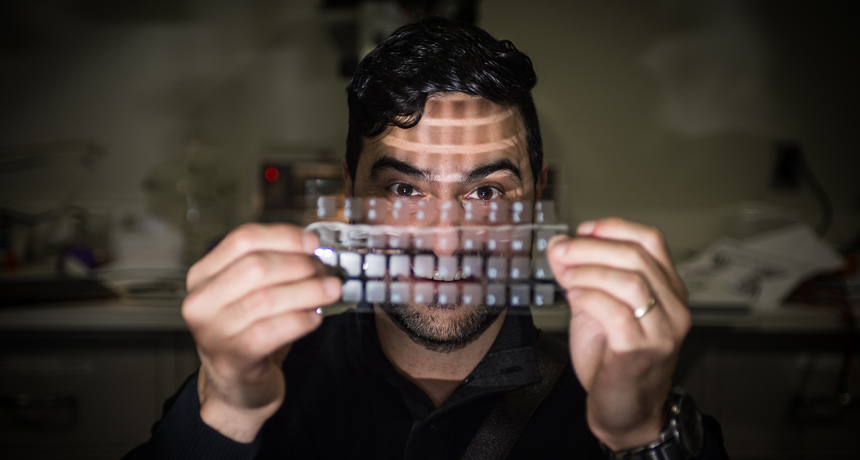Questions for ‘What powers these electronics? We do!’

Batteries not required. This foldable keyboard (shown with its inventor Nelson Sepúlveda) can harvest energy from keystrokes.
G.L. Kohuth/MSU

Batteries not required. This foldable keyboard (shown with its inventor Nelson Sepúlveda) can harvest energy from keystrokes.
G.L. Kohuth/MSU